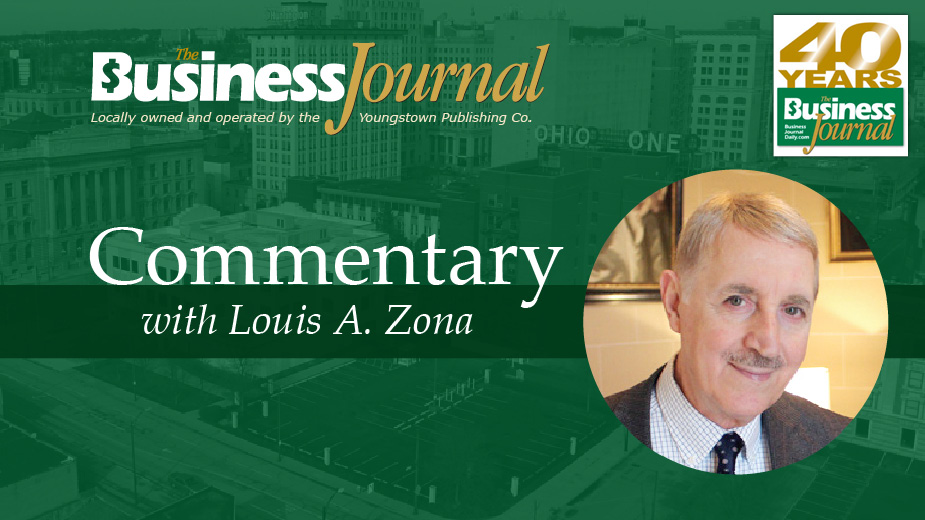By Louis A. Zona
YOUNGSTOWN, Ohio – I’ve seen changes. Oh, have I ever seen changes! I think we have all witnessed change in nearly every aspect of life. But having worked for over 40 years in the art field, I can tell you much has indeed changed while a sprinkle has remained the same.
My four decades as director of The Butler Institute of American Art has given me a unique perspective on the world of art and the changes that have taken place in the museum world as well.
One of the truly great men in the Youngstown community was Joe Butler who directed the museum that his grandfather founded in 1919. It was Joe who saw me at Youngstown State University teaching a course in the operation of museums. He then asked me to program The Butler.
Within six months Joe died but not before he asked Trustee Jerald Meyer to ask the other trustees to honor me by selecting me to head The Butler as its third director. Joe Butler’s generosity and the faith he had in me will always be cherished.
Those first couple of years in the early 1980s were both exhilarating and in some sense difficult. Joe Butler added significantly to the collection but left it up to me to create a more professional environment in which to house the collection.
We began by installing air conditioning and humidification systems. I was able to receive a grant from the National Endowment for the Arts of $400,000 (in today’s world, nearly $1.2 million) to make it happen.
We then completely rewired the building and planned our first major addition. It was completed in the mid-1980s and included Beecher Court, restrooms, a sports gallery, new wall surfaces, marble surfaces, an auditorium and the addition of the rest of the west wing. It was a good thing the entire building was rewired, one engineer told me. The building might have suffered a fire because of its aging wiring.
By its nature, art reflects the time when it was created. If with some magic we could bring back Leonardo da Vinci, do we really think that he would be known for his paintings?
No, Leonardo would be working on some form of artificial intelligence or perhaps designing space craft engines for NASA and not be working with his hands on the creation of a mural for St. Peter’s.
Over these last 40 years, we at The Butler were able to use technology in interesting ways, such as the installation of a state-of-the-art security system. And we were the first museum in the United States to create an addition devoted to digital technology – including the installation of the David Bermant collection of more than 100 works of digitally based art that includes the biggest names in the field. Among them are Nam June Paik and Marcel Duchamp, two of the greatest artists of the 20th century. So, on the professional level, we could see the visual arts changing dramatically and moving toward exciting new experimental paint media, electronics, and advanced three- or four-dimensional works or even imagery projecting on our brains.
One thing is for sure: The Butler’s Bermant Collection will continue to celebrate America’s glorious artistic past but we will expect art to parallel the technology that will be an aspect of nearly every field of human endeavor.
The art of tomorrow is bound to excite the eye and mind. It is true that art leads the way and, in fact, artists will be as creative as ever. Who knows what remarkable things will be released from artists’ studios in our future?
Local art will also change but not quite as much as the aforementioned digital art. Local art tends to be very conservative with traditional realism leading the way. I have noticed that much of the art at the local level depends upon an aesthetic that comes from art education or university studio art programs. The Butler’s Area Artist Annual Exhibition reveals the static nature of much local art. The more adventurous artistic production flows from YSU’s department of art and other regional college-level programs.
What we also should consider with regard to local art production is the heavy emphasis placed upon skill. If art has been skillfully created, it is seen as successful.
In the future, the definition of “skill” will need to be fleshed out. For sure, it would not be about pencil sketching but probably more about explorations of the mind and imagination.
As for the future of art museums, the concept of “museums without walls,” promises to be front and center. The collection, installation and study of art will always be the reason for art museums’ existence. But technologies such as security systems and three-dimensional holograms serving as tour guides might be commonplace.
Art and the museums that house it will continue to serve the culture. The Butler has begun to use electronic surveillance and has a system that not only protects the art but also presents it in unique ways.
The size of The Butler’s art collection has grown in size (22,000 art works) and in quality over the years. The dramatic expansion of the museum has affected aspects from programs and exhibitions to art salvage (Pierre Soulages masterpiece) and wide-ranging events that stretch the definition of what constitutes a museum of art.
